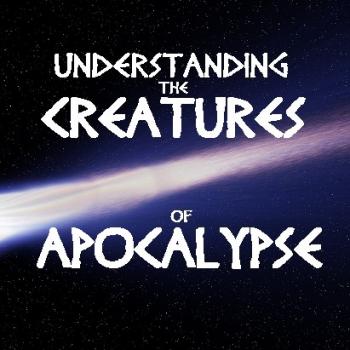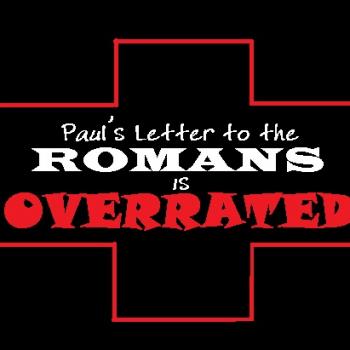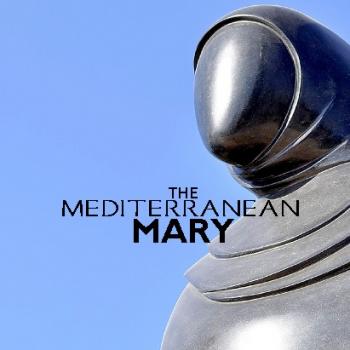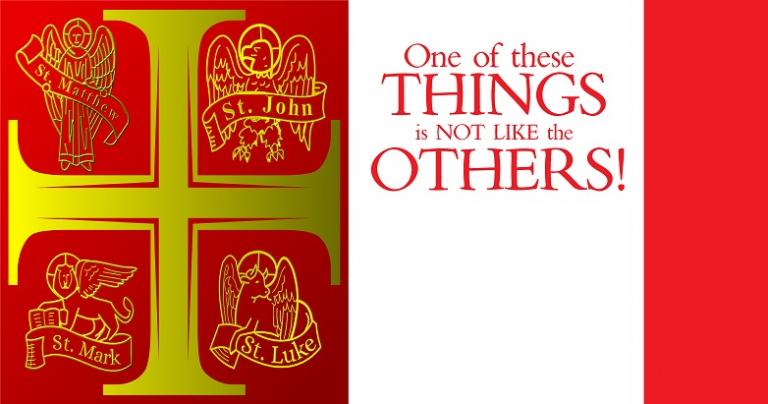
Missing from one Gospel, but included in another, traditions about Jesus differ widely between “Matthew,” “Mark,” “Luke,” and “John.”
Missing stories!—why do some Gospels include a saying or doing of Jesus but others do not? Last week, we went over various difficulties experienced by Bible readers expecting the Gospels to be fact-precise like well-researched 21st century biographies. Our Gospels grew incrementally. This happened as followers of Jesus used his sayings and acts in new contexts. They drew parallels with Israelite Scriptures and quote from them. They gave new openings and conclusions to his parables and turned them into allegories.
Clearly the Gospels cannot be “21st century Western histories of Jesus.” What are they then? The Gospels are portraits of the theological preaching about Jesus done by the earliest Jesus groups. Difficulties proliferate for scholars trying to tell what saying or action originates from the historical Jesus and which sprang out of later followers in the Spirit of Jesus.
Missing from “John”
Here is a mindboggling list to any honest fundamentalist. The following are missing in the Fourth Gospel we call “John”—
1) The Temptation in the Wilderness
Mark 1:12-13; Matthew 4:1-11a // Luke 4:1-13a
2) Rejection at Nazareth
Mark 6:1-6 // Matthew 13:54-58 // Luke 4:16-30
3) Parables
Let it sink in that “John” does not have a single parable! The parables of Jesus are missing from the Fourth Gospel. Ask any New Testament scholar and she or he will tell you that of all kinds of sayings or teachings attributed to Jesus, the most likely historical, is that he told parables. And yet no parable is to be found in “John”!
4) Sermon on Mount/Plane/Beatitudes
Matthew 5:3-12 // Luke 6:20b-23
5) The Lord’s Prayer
Matthew 6:9-13 // Luke 11:2-4
Can you imagine Christianity without the Lord’s Prayer? I can’t. I’m Catholic. Christianity without the Our Father is inconceivable to me. This prayer is found in very different forms in the documents called “Matthew” and “Luke.” But it is missing everywhere else, including “Mark” and “John.” Why is it missing? How could there have ever been a time when this prayer was deemed by some followers of Jesus to be unimportant? Or how could there have been disciples who didn’t know it? These questions make sense below.
6) Jesus Eating with Sinners
Mark 2:14-17 // Matthew 9:9-13 // Luke 5:27-32
7) Woman of the Town Forgiven
Mark 14:3-9 // Matthew 26:6-13 // Luke 7:36-50
8) Accepting Children
Mark 10:13-16 // Matthew 19:13-15 // Luke 18:15-17
9) Woes to Scribes and Pharisees
Matthew 23:13-36 // Luke 11:39-52
10) Peter’s Confession
Mark 8:27-30 // Matthew 16:13-20 // Luke 9:18-20
11) The Transfiguration
Mark 9:2-8 // Matthew 17:1-8 // Luke 9:28-36
12) Mission of the Twelve
Mark 6:7-13 // Matthew 10:5-15 // Luke 9:1-6
13) Mission of the Seventy
Luke 10:1-12
14) Eucharistic Institution Narrative
Mark 14:22-25 // Matthew 26:26-30 // Luke 22:19-20
15) Paying Taxes to Caesar
Mark 12:13-17 // Matthew 22:15-22 // Luke 20:20-26
16) Tax Collector Stories
Luke 19:1-11
17) Appearance on the Road to Emmaus
Luke 24:13-35
Wouldn’t you say that these were awesome stories? Why are missing in the document we call “John,” the Fourth Gospel? How could he leave those out? That none of these are to be found in “John” begs the question! What does that mean?
Missing: Understanding
Could it be that the anonymous author of “John” didn’t know these stories and reports? Is it possible that he never heard them, or even about them? Would it have been possible that these traditions could have slipped by him? How could they have slipped by John, Son of Zebedee, one of the “sons of Thunder”? John was close to Jesus, wasn’t he? How could such a beloved follower miss these crucial details?
Then again, maybe the author of the text we call “John” was not the disciple John, an illiterate fisherman. Since Galilean fishermen were illiterate, how could he have authored the Fourth Gospel that now bears his name?
Maybe there is yet another possibility. Maybe “John” (whoever he really was) did know these stories, but he decided not to include them. Isn’t that what the author tells his readers in the original ending to his Gospel?
John 20:30
Now Jesus did many other signs in the presence of [his] disciples that are not written in this book.
How Could the Lord’s Prayer be Missing in “John”?
So it makes sense that the unnamed author of the Fourth Gospel knew many more Jesus traditions and stories than the ones he committed to writing. That could help explain why some of these are missing in “John.” But that still leaves us with troubling questions—how could he not include the Lord’s Prayer?
If you were “John,” how could you possibly leave the Lord’s Prayer out of your Gospel? Either he didn’t know it (think about why that would be!) or he did know it but thought that, when compared to the Jesus-sayings he did include, it wasn’t important enough for inclusion. Can you imagine selecting among materials of Jesus traditions, coming across the Our Father, and going, “Meh, not interesting enough”?
Missing from the Synoptics
The Synoptic Gospels have none of the following Johannine material—
1) Prologue or Hymn the Logos
John 1:1-18
The first eighteen verses of the Fourth Gospel form a Prologue to its narrative, called by some scholars, “the Hymn the Logos.” The Johannine hymn is missing everywhere else. It is unique to “John.” It presents Jesus as the Word of God. It says he had a preexistence before anything was created.
Consider that we find such beliefs nowhere in the Synoptics. Why is that? If you believed that about Jesus, how could they possibly leave that out of your “Good News” about him?
2) Andrew Finds Peter
John 1:40-42
3) Call of Philip and Nathanael
John 1:43-51
4) The Wedding at Cana
John 2:1-12
Almost every Christian knows the Wedding at Cana story, where Jesus is said to have transformed water into wine. Sadly, many Christians are oblivious that it is found only to “John.” It is missing everywhere else. Why? The author to the Fourth Gospel uses this story to establish Jesus’ first sign. It literally launches the Johannine Jesus into his ministry. Why is it absent in the Synoptics? Didn’t they know about it? Didn’t they know how Jesus began his ministry, and what his first marvel was? And if they did know about it, how could they choose not to include it?
5) Nicodemus comes to Jesus at night
John 3:1-21
This is another story unique to the Fourth Gospel, missing in every other Gospel. The elite Pharisee Nicodemus comes to Jesus at night. Think about that—we are informed that a ruler of the Judeans comes to Jesus in the middle of the night and tries to learn from him. Don’t you think it would be remembered by all the Jesus groups if a Israelite elite actually came to the historical Jesus, the peasant day laborer turned folk healer in this fashion? Why does only “John” record it?
Nicodemus asks honest questions to Jesus, as if he were Jesus’ social inferior, his would-be disciple. Surely if such a thing actually happened it would have been remembered by far more than just one Jesus group writing one Gospel. But if that was so, why do the other Gospels omit telling it?
6) He who comes from above…
John 3:31-36
7) Samaritan Woman at the Well
John 4:1-42
8) Healing of man sick for 38 years
John 5:1-18
9) The Son can do nothing of his own accord
John 5:19-30
10) The Father bears witness to me
John 5:31-47
11) I Am the Bread of Life
John 6:25-59
Only the Johannine Jesus says all these “I AM” (egō eimi) statements. These are missing everywhere else. The “I AM” sayings only happen in “John.” We are talking about sayings like “I AM the bread of life,” “I AM the bread from sky vault,” “I AM the door,” “I AM the resurrection and the life.” Only the Fourth Gospel has them. They are found nowhere else in early Jesus group literature!
Did the historical Jesus actually say any of those “I AM” statements? Or could it be that they were invented by early Jesus group preachers, or even the unnamed author of “John”? How would you know?
12) Taking offense at Jesus
John 6:60-71
13) Jesus talks with His Brothers
John 7:1-9
14) Jesus Goes to Jerusalem Incognito
John 7:10-13
15) Jesus’ Trouble with Authorities
John 7:14-52
16) The Woman Caught in Adultery
John 7:53—8:11
Dr. Richard Rohrbaugh explains that it is almost certain that this fascinating story was not in the original version of “John.” No other early Jesus group writing has it—and it is a wonderful story! Rohrbaugh says that when scholars examine “John” it is a dead giveaway that it got shoehorned into the text. Why? It is because it breaks up the Fourth Gospel’s train of thought. In other words, says Rohrbaugh, this wonderful story has been rather clumsily inserted into a text never meant to hold it. This edit-job sticks out like stitches and bolts on Boris Karloff’s Frankenstein Monster.
How did this happen? Rohrbaugh explains an easy hypothesis—imagine someone reading an early version of the Fourth Gospel. This Jesus group member knows of the story of the Woman Caught in Adultery. So he laments, “This is too good a story to leave out!” And what does he do? He jams the story into his “John” 2.0, in a way that really doesn’t work narratively or theologically speaking.
Could it be that this story had been invented and that the historical Jesus never did such a thing? Sure, that is possible. But it could also very well be from the historical Jesus! The important takeaway here is that someone who was not the original author of “John” really loved story. He just felt it had to be included, so voila!—he included it. But it is missing everywhere else.
17) I Am the Light of the World
John 8:12-20
18) Controversy Over Jesus’ Identity
John 8:13-58
19) Healing of the Man Born Blind
John 9:1-41
20) I Am the Good Shepherd
John 10:1-18
21) Jesus and the Father are One
John 10:22-30
22) Judaeans Seek to Stone Jesus
John 10:31-42
23) Raising of Lazarus
John 11:1-44
Why does no other early Jesus group writing tell this story? You really need to think about that. Imagine that the historical Jesus really did that. If that really happened, wouldn’t word about it spread everywhere like a wildfire? But if that is so, then, why is it missing in all the other Gospels? It’s missing in the Synoptics. It’s missing in the rest of the New Testament works. How could they leave that one out?
Was it historical? What if it was not historical. Could it be that the Raising of Lazarus story was a theological creation?
24) Judaeans Try to Kill Lazarus
John 12:9-11
25) The HOUR has Come!
John 12:20-36
26) Jesus’ Summary Message
John 12:44-50
27) The Foot-washing at the Last Supper
John 13:1-20
Scholars like Rohrbaugh and friends find this puzzling. When you read “Matthew,” “Mark,” and “Luke,” there the Last Supper is about the Eucharist, the sharing of Christ’s body and blood. So these Synoptic Gospels all have Institution Narratives. How about the Fourth Gospel called “John”? Nope. When it comes to “John,” the Last Supper is all about a foot-washing!
Time passed. Jesus groups grew into churches. These later churches focused on what the Synoptics’ focused on, the bread and wine. And the Johannine foot-washing? It got dumped.
Could it be that “John” was ignorant about the central act of sharing of bread and wine as Jesus’ Body and Blood? Or was it that the Jesus groups that produced the Synoptic Gospels never got informed about the foot washing? Or is it something else entirely going on?
28) A New Commandment
John 13:31-35
These stories are in “John” and “John” alone! They are missing everywhere else in first century Jesus group literature.
Gospel Scholarship & What Really Matters
Biblical scholars have their hands full trying to navigate around the question of historicity when it comes to the sayings and doings of Jesus as reported in the Gospels. How do they sort all that out? They need carefully designed scholarly criteria in order to judge what is historical (Stage One of Gospel Formation) from what is not (Stages Two and Three).
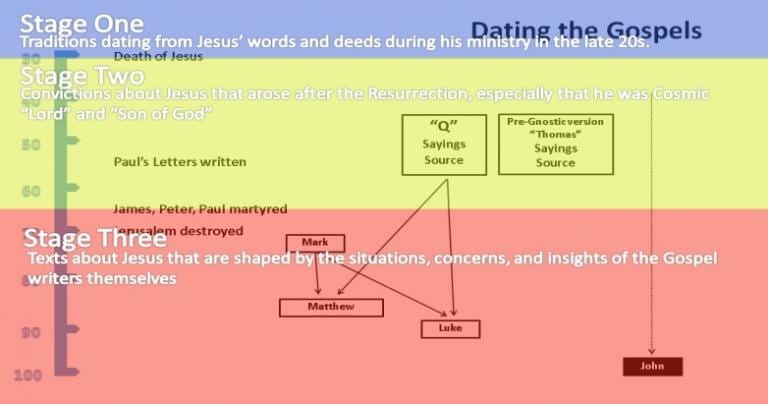
Rohrbaugh says that scholars need to also recognize that some historical problems don’t matter all that much. Is it really a titanic issue whether Jesus got crucified on a Thursday or a Friday? Rohrbaugh and scholars like him don’t think so. However, whether Jesus was the Lamb of God is another matter. Something said of Jesus could have tremendous theologically meaning for people. But what about it’s historicity?
Therefore Rohrbaugh says that exegetes and theologians not only have to figure out what is and is not historical, but also which historical events were important and which were not. For instance, is it important that the crucifixion actually happened in history? Wouldn’t Christianity fundamentally change if the crucifixion was not an historical event? However, when it comes to the weekday it happened on, that’s not too important.
I don’t envy biblical scholars. They have a difficult job and a lot of snarling enemies that would make Star Wars fanboys blush. Their job is difficult and often thankless. And making these judgements on historicity of Gospel traditions takes great care.
What the Missing Pieces Tell Us
Look at the above missing pieces found in some Gospels but not in others. Look at all the variations of the sayings and acts of Jesus found in the canonical and apocryphal Gospels (here, and here, and here). It’s obvious none of these are eye-witness accounts.
“Matthew,” “Mark,” “Luke,” and “John”—these are the names on our canonical and inspired Gospels. But it was not until late in the second century that these names were fixed to these inspired documents. We don’t know who the real authors were. Tradition associated these Gospels to certain early Messianist figures—that we know. But the actual historical writers?—anonymous all.
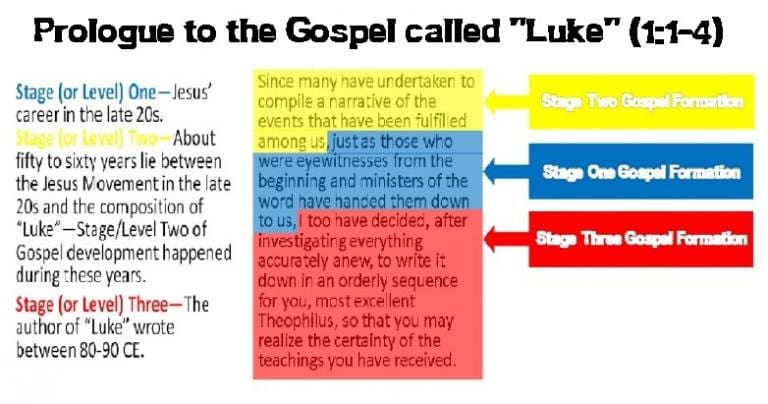
A close examination of the document called “Luke” shows its author could not have been an eye-witness. Indeed, he informs us about this. He literally states that he is in Stage Three of Gospel Development and that he’s borrowed what he knows from many different sources and combined them into his story.
Missing: Eye-witness Accounts!
What eye-witness accounts of the earthly Jesus do we have? None. And we have no writings from Jesus himself. Knowing what we do about the socio-economic scale of Herodian Palestine and life in the Galilee, it is almost certain that Jesus was illiterate. There were no schools in first century Galilee and Israel had the lowest percentage of literacy in the Roman Empire. Rohrbaugh says that possibly literacy there was as low as one-half of one percent!
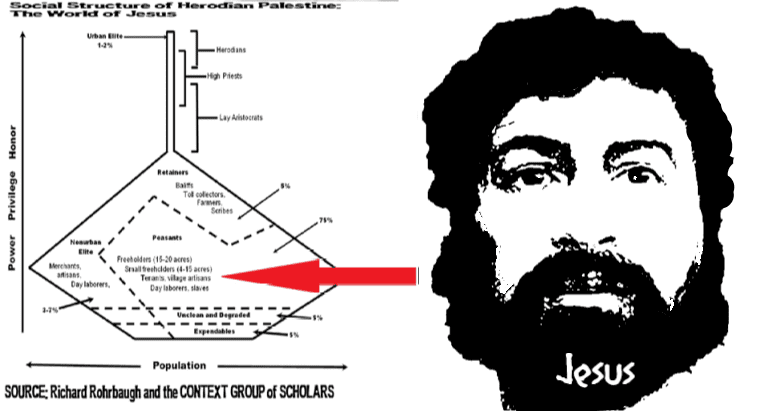
Does this destroy Christianity? No. Does this demolish our Niceno-Constantinopolitan Creed? It does not. This only affects our immature ideas about inspiration and incarnation. It also reminds us that truth is more than just facts. While the Gospels certainly are not devoid of facts and historicity, they are not primarily oriented to the kinds of factual truths we 21st century Westerners obsess over.
More later…



